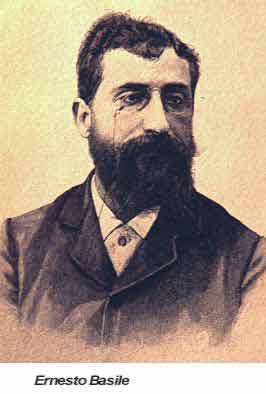Ernesto Basile (Palermo, 1857-1932).
Italian architect

Palermo-born architect who designed many buildings in Rome and Sicily, including those for the Palermo Exhibition (18912). One of the chief protagonists of the
Stile Liberty, the Italian version ofArt Nouveau , he displayed his work at the Turin Exhibition (1902), the Venice Biennale (1903), and in The Studio (1904). His elegantly linear Art Nouveau architecture is perhaps best represented by the Villino Florio (18991902), the Hotel Villa Igiea (18991901), and the Utveggio House (1901) in Palermo. He also designed the Villino Basile and the Villino Fassini (1903), both in Palermo. One of his most impressive buildings was his extension to Bernini's Montecitorio Palace, Rome (190227), in a sumptuous Renaissance style. After the 191418 war his architecture became more Classical, as at the Istituto Provinciale Antitubercolare (19205) and the Albergo Diurno (1925), both in Palermo, with which he demonstrated his opposition to the growing influence of Functionalism.In 1896, he collaborate with Ceramica Florio, with Caraffa firm, with Li VIgni firm for tapestry, ceramic, and later with Ducrot, producing furnitures, with great success at 1° Esposizione dArte Decorativa di Torino (1902).
Works:
Villa Florio a Palermo
Villino Ida a Palermo
Fassini a Palermo
Hotel Villa Igea a Palermo (1898)
Teatro e Villa Lombardi a Canicatti
Monumento per i caduti di Calatafimi
Villa Favaloro a Palermo
PalermoChioschi a Palermo
PalermoKursaal Biondo a Palermo
a PalermoPalazzo del Parlamento a Roma
Ebonist projects